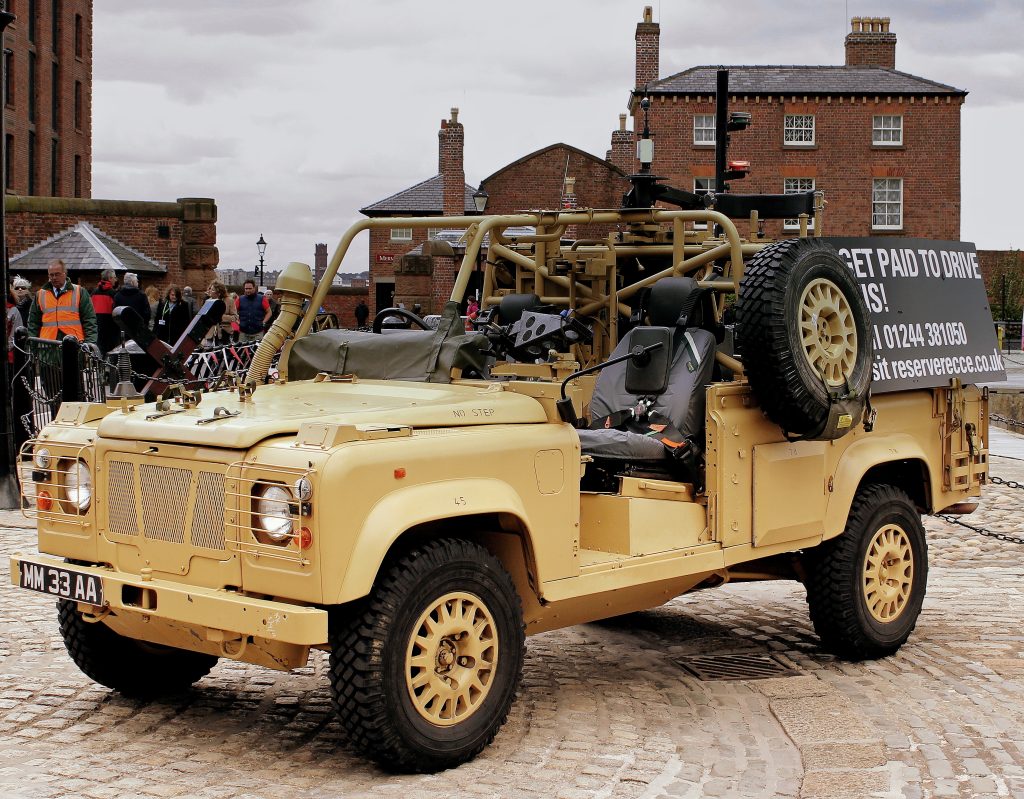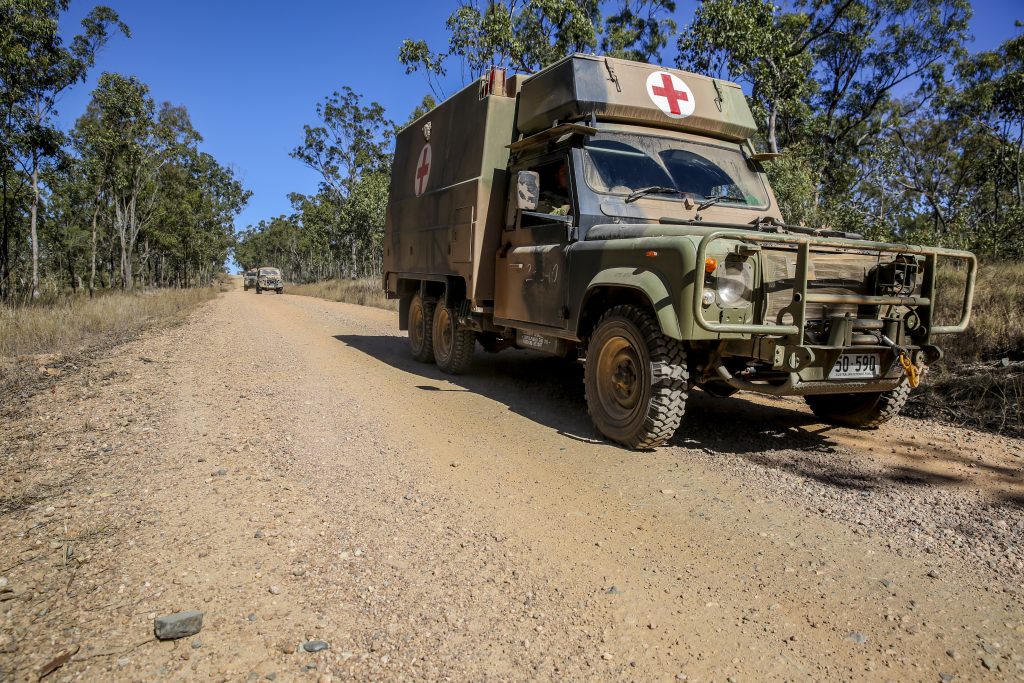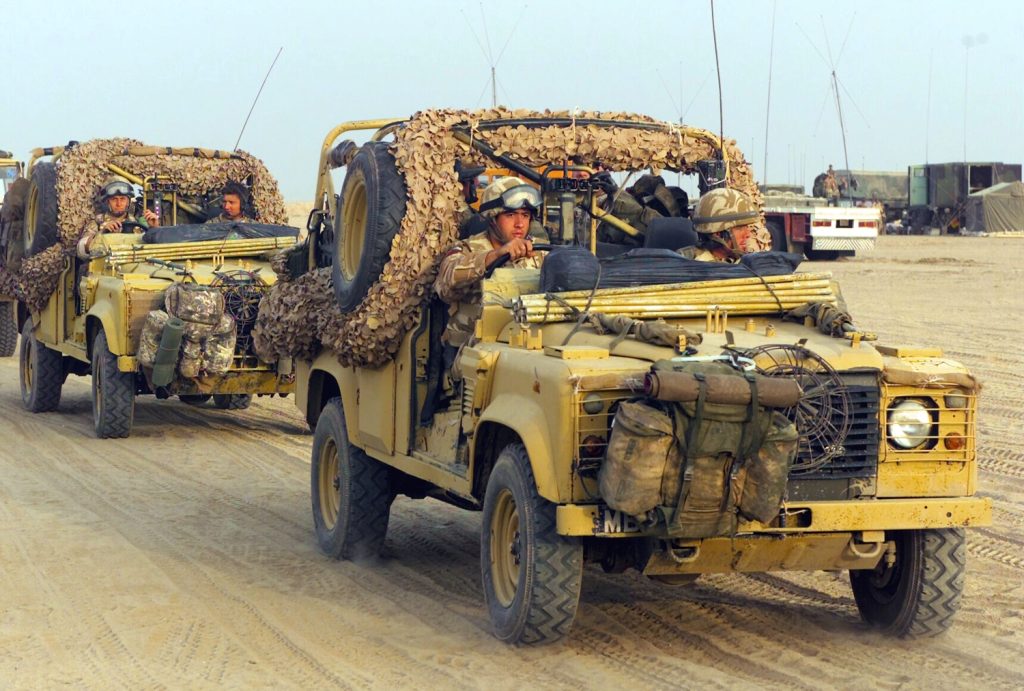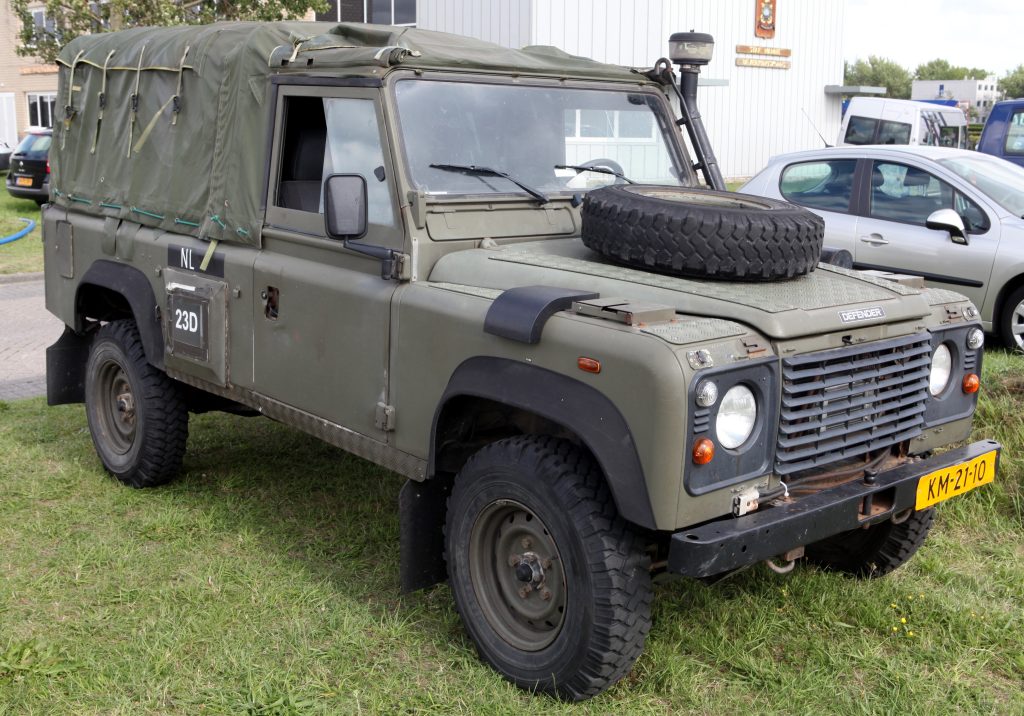
Author: John-Joe Vollans
Photography: Wikimedia/Public Domain
For almost as long as the Land Rover has existed, its tougher olive-drab-coated cousin has been found in political pinch points across the world. As a light patrol and go-anywhere reconnaissance vehicle, the Land Rover followed in the footsteps of its Jeep inspiration. If you’re lucky, you might even still see one in camo, serving our armed forces today – although many a military Landy role has now been taken up by newer, more purpose-built machines. Nevertheless, there’s still many a fond memory or patriotic pathos that surrounds fighting or supporting Land Rovers.
It all kicked off on 2 May, 1949 with the British Army’s first order for 1878 vehicles. Those numbers soon ballooned, with the army getting over 13,500 by the end of 1958. Early conflicts that saw Landys serve included the Korean War and the Suez Crisis, among numerous other British and Commonwealth flash points and humanitarian crises.
Since then, military Land Rovers have been involved in major conflicts in regions as diverse as Northern Ireland and Iraq, and from the Falklands to Bosnia. Land Rover’s finest has even been deployed in both northern and southern polar regions – although not always by the military – proving once again that its rugged construction and simple mechanical components beat touchscreens and computers where it matters.

Ambulance
Just as important as getting into a fight is getting wounded troops out of one. The 1950s saw the first mass adoption of the Series II/A-based Land Rover Ambulance. Taking the basic ladder-frame chassis and stretching it to 109 inches allowed for a closed rear load area, capable of accommodating several stretchers and emergency medical equipment. These early designs proved so popular and efficient that they were in use throughout the latter half of the 20th Century, eventually being phased out in the early 1980s. These 4×4 ambulances served with distinction in conflicts such as the Falklands and Gulf wars, where the terrain, vast distances and adverse weather made casualty recovery and treatment especially challenging.
The ‘forward control’ or 101 briefly replaced the more recognisable Series-Landy-based ambulances from 1981. Marshalls of Cambridge was predominately responsible for the MoD’s conversions, with Locomotors Coachworks also producing its own red-cross-covered, stretched version of the 127″ (130) Land Rover Ambulance.
A later – and very appropriately named – Defender-based ‘Pulse’ ambulance took the type almost up to the present, but we’re not sure how many remain in front-line service. Its go-anywhere casualty recovery role has now largely been taken up by more bespoke, and better protected, Foxhounds and Huskies.

Lightweight
As its name suggests, this featherweight (relatively) stripped-down Landy for airlifts was developed in the late-1960s. The Lightweight, or ½ ton, was envisioned by Rover – at the behest of the MoD – with the latter’s stipulations being that it had to sit two abreast inside an Armstrong-Whitworth Argosy transport plane, and weigh no more than 1134kg, in order for it to be easily lifted by the then current Wessex helicopter.
The project involved stripping down a Series IIA to its bare bones and ditching everything that wasn’t deemed essential. That meant the rear seats, spare wheel, windscreen and hood (along with a host of other components) were all deemed superfluous. The body was reworked to allow it to fit within the confines of the aforementioned aircraft’s hull and the Lightweight as we know it came into being.
Its knock-down nature and strict lightweight construction soon proved less vital as more powerful and spacious transport aircraft came into service but, nevertheless, it’s thought that around 3000 Series IIA Lightweights and 18k Series IIIs were made until production shifted to the 90 in the mid-1980s. Despite this, the MoD allegedly advertised its last Lightweight for sale as late as 2009.

‘Snatch’
The somewhat infamous reputation of the Snatch was widely reported by the British media during the Iraq and Afghan conflicts of the early-2000s. However, the Snatch had actually been developed and deployed first for Northern Ireland. Developed as a low-threat, armoured patrol vehicle, the Snatch pre-dated the Defender-based Wolf (don’t worry, it’s coming up next). Developed with composite armour to repel small arms and some explosives the 3500kg Snatch was first seen policing the troubled streets of Northern Ireland in 1992.
In 2010, an announcement was made that the Snatch would be replaced by the more bespoke Force Protection Ocelot, but that wasn’t the end of the Snatches tale… While awaiting decommissioning, some of the alleged 200 remaining Snatches were turned into remote-controlled versions for mine clearance. The result was the ‘Panama’ ROV version of the Snatch that carried forward ground-penetrating radar to spot hidden IEDs and mines. Clever repurposing of the obsolete Snatch allegedly brought the Panama into service in just 11 months and £9 million under budget.

Wolf
Perhaps the best known of all the military Landys, the Wolf, has won many admirers both on the battlefield and the home front. Essentially looking very similar to a production Defender 90 or 110, the Wolf hides most of its upgrades under deliberate sheep’s clothing. Its near-civilian appearance was mainly the point, making its role of patrolling inhabited areas easier on the civilian population. You’re less likely to be alarmed by seeing a few troops in a stock-looking Land Rover than seeing the same squad drive by in an APC.
Despite outward appearances, the Wolf was substantially upgraded for military use with a revised and strengthened chassis – triangulated at the front and reinforced at the rear. The galvanising was skipped – worth bearing in mind if you’re looking to buy one – as was the Td5; the old 300 TDI engine deployed instead, due to its largely mechanical nature and ease of repair and maintenance. The rear axle was also substantially reinforced after trials allegedly found that the factory Salisbury versions weren’t up to the job.
The wildly-popular Wolf saw nearly 100 separate variations, with all manner of combat and support roles fulfilled during its near quarter century of service. Today, you’re far more likely to see one of these rugged off-roaders on the UK’s roads, rather than in action, as most of the circa 8200 Wolfs made are now in civilian hands.
What’s your favourite military Land Rover? We would love to hear from you at hdc@hagerty.co.uk